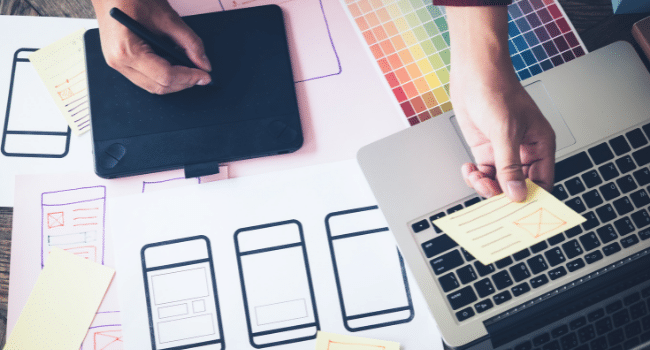Table of Contents
What’s the first thing that appeals to you as soon as you land on a website? The theme? Colour? Design? Text? A web page is more than just an informative text page; it accumulates all that enhances a user’s experience.
Hence the name, User Interface, or UI. UI design is an essential aspect of web design that manages the interaction of an internet user with your website. A good UI design ensures that the user will navigate your product or service automatically.
This article will help you define what user-interface design is and some essential tips to help you understand user-interface design better.
What is User-Interface Design?
The user interface accumulates the overall aesthetic experience of digital interfaces, primarily visual touchpoints like typography and navigation menus.
The focus in user interface design is more around the look and feel of the interface. UI designers need to remember that users feel pleasant while using or navigating a website.
It’s a process where the designers and developers create user-friendly interfaces for websites to help direct their customers towards their product or service.
Common Forms of User-Interface Design
Almost all companies very commonly use UI design for their websites or apps. It’s an important feature that keeps the users happy whenever they land on a web page.
These are some of the most common forms of user interface design. Let’s take a look at them:
Graphical UI
Graphical user interfaces are described as the visual representations of buttons, menus, control panels, or essentially anything that a user will interact with. A fine example of this user interface is your laptop or mobile phone’s interface.
Voice-controlled UI
A voice-controlled user interface is most commonly used these days, especially with the expansion of technology. These are classified as sounds and interfaces that require voice commands to initiate an action. Examples of these interfaces are Apple’s Siri, Amazon’s Alexa, etc.
Gesture-based UI
Gesture-based user interfaces are also becoming very popular these days. These interfaces require a user’s gesture or motion to affect the action of a product that is being used. For example, virtual reality games need gesture-based user interface designs to initiate action.
Things to Keep in Mind While Designing UI
Various factors need to be pondered while designing an exemplary user interface. It can help a web page or an app perform better.
- Keeping the design more goal-focused will benefit a particular target audience. A user interface design aims to provide easy access and navigation to the users. The design solution should be well-researched about customer expectations.
- It’s essential to remember that creating a culture-specific user interface will add a personal touch to their overall experience. Keeping an eye on the cultural ethnicity of a geographical area before starting a user interface design will be beneficial.
- Choosing the colours is one of the essential factors of user interface designing. The designers can inspire colour palettes that will help a user feel more connected with a brand or company.
- Placement of designs or texts is crucial for user interface design. A good design should be well-balanced, and the content should be well-placed for easier access. Adding images works like a charm but stuffing a web page with excessive images can be disastrous.
Conclusion
The user interface is the first interaction with a web page. Whether the user decides to opt for a service or product on the page depends on the UI design.
Hopefully, with the factors mentioned above, you’ll be able to create and design user interfaces that are more user-friendly and engaging!
Read more on KulFiy
